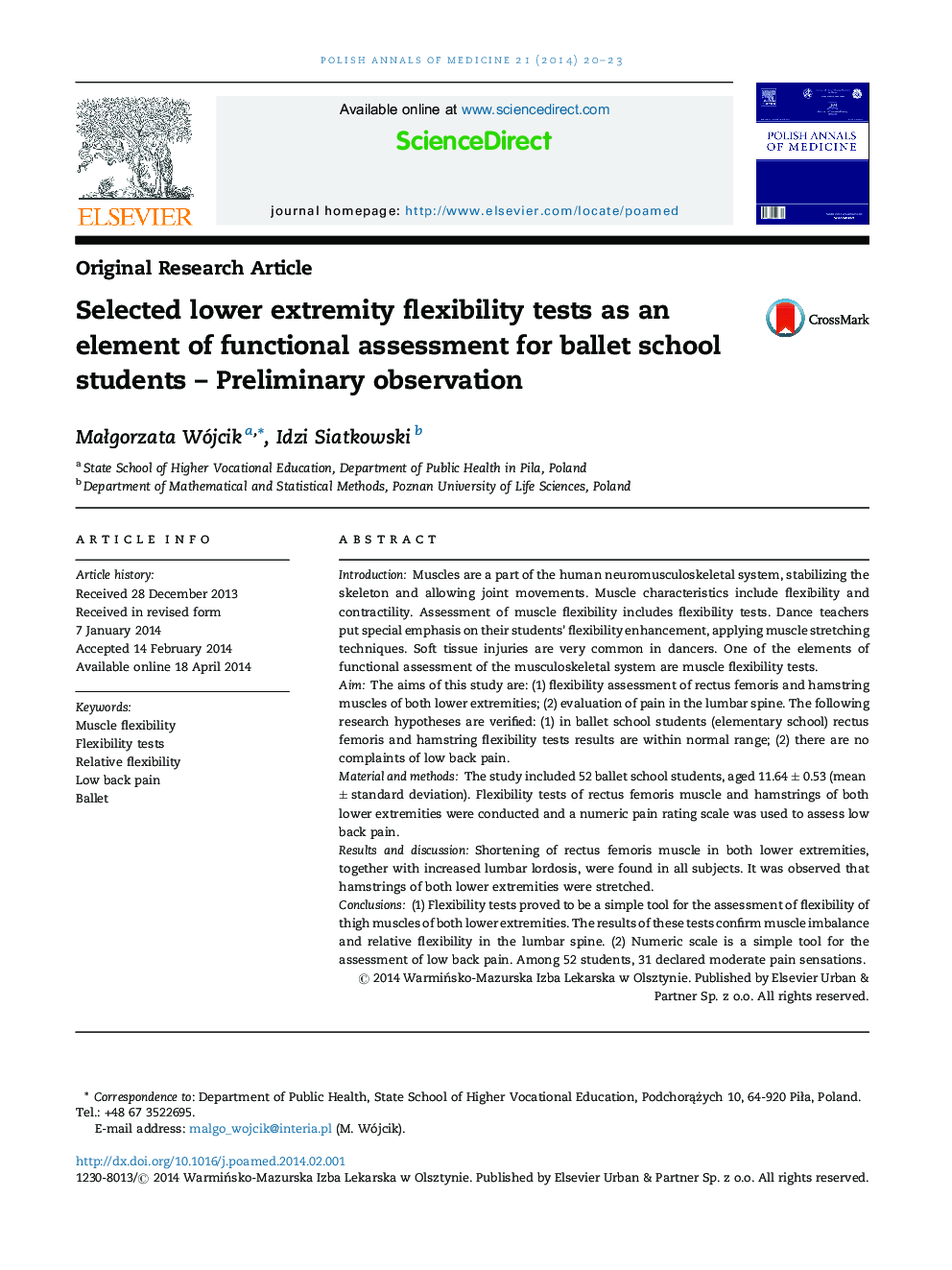| Article ID | Journal | Published Year | Pages | File Type |
|---|---|---|---|---|
| 2675884 | Polish Annals of Medicine | 2014 | 4 Pages |
IntroductionMuscles are a part of the human neuromusculoskeletal system, stabilizing the skeleton and allowing joint movements. Muscle characteristics include flexibility and contractility. Assessment of muscle flexibility includes flexibility tests. Dance teachers put special emphasis on their students’ flexibility enhancement, applying muscle stretching techniques. Soft tissue injuries are very common in dancers. One of the elements of functional assessment of the musculoskeletal system are muscle flexibility tests.AimThe aims of this study are: (1) flexibility assessment of rectus femoris and hamstring muscles of both lower extremities; (2) evaluation of pain in the lumbar spine. The following research hypotheses are verified: (1) in ballet school students (elementary school) rectus femoris and hamstring flexibility tests results are within normal range; (2) there are no complaints of low back pain.Material and methodsThe study included 52 ballet school students, aged 11.64 ± 0.53 (mean ± standard deviation). Flexibility tests of rectus femoris muscle and hamstrings of both lower extremities were conducted and a numeric pain rating scale was used to assess low back pain.Results and discussionShortening of rectus femoris muscle in both lower extremities, together with increased lumbar lordosis, were found in all subjects. It was observed that hamstrings of both lower extremities were stretched.Conclusions(1) Flexibility tests proved to be a simple tool for the assessment of flexibility of thigh muscles of both lower extremities. The results of these tests confirm muscle imbalance and relative flexibility in the lumbar spine. (2) Numeric scale is a simple tool for the assessment of low back pain. Among 52 students, 31 declared moderate pain sensations.
